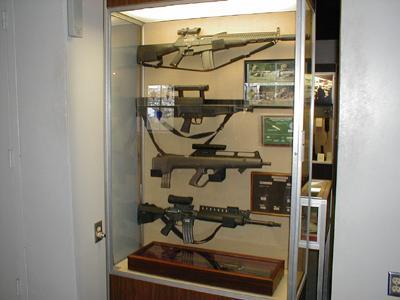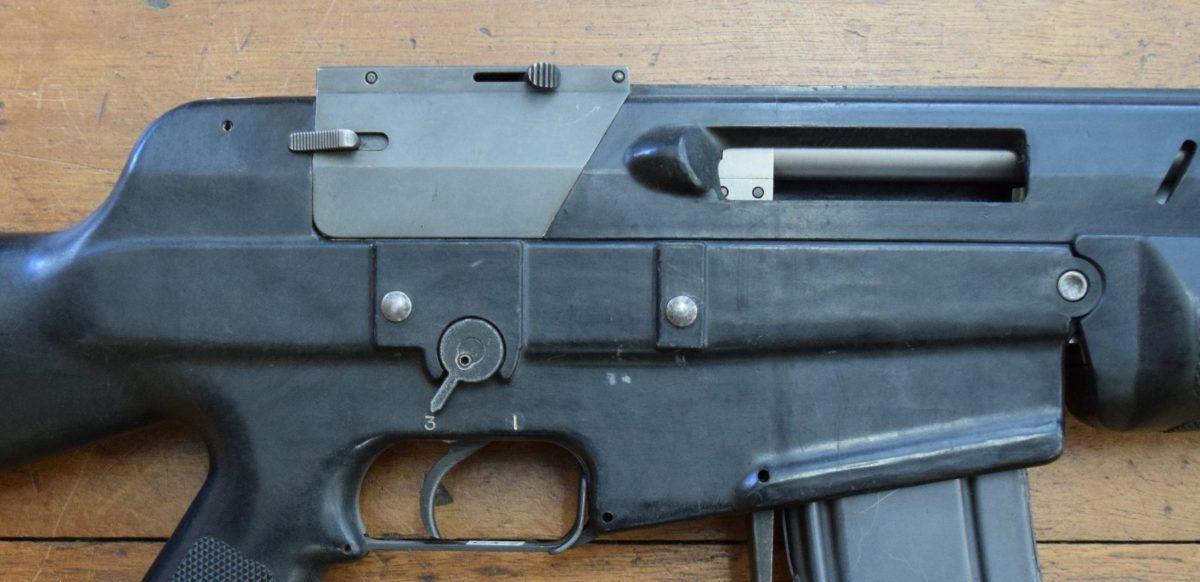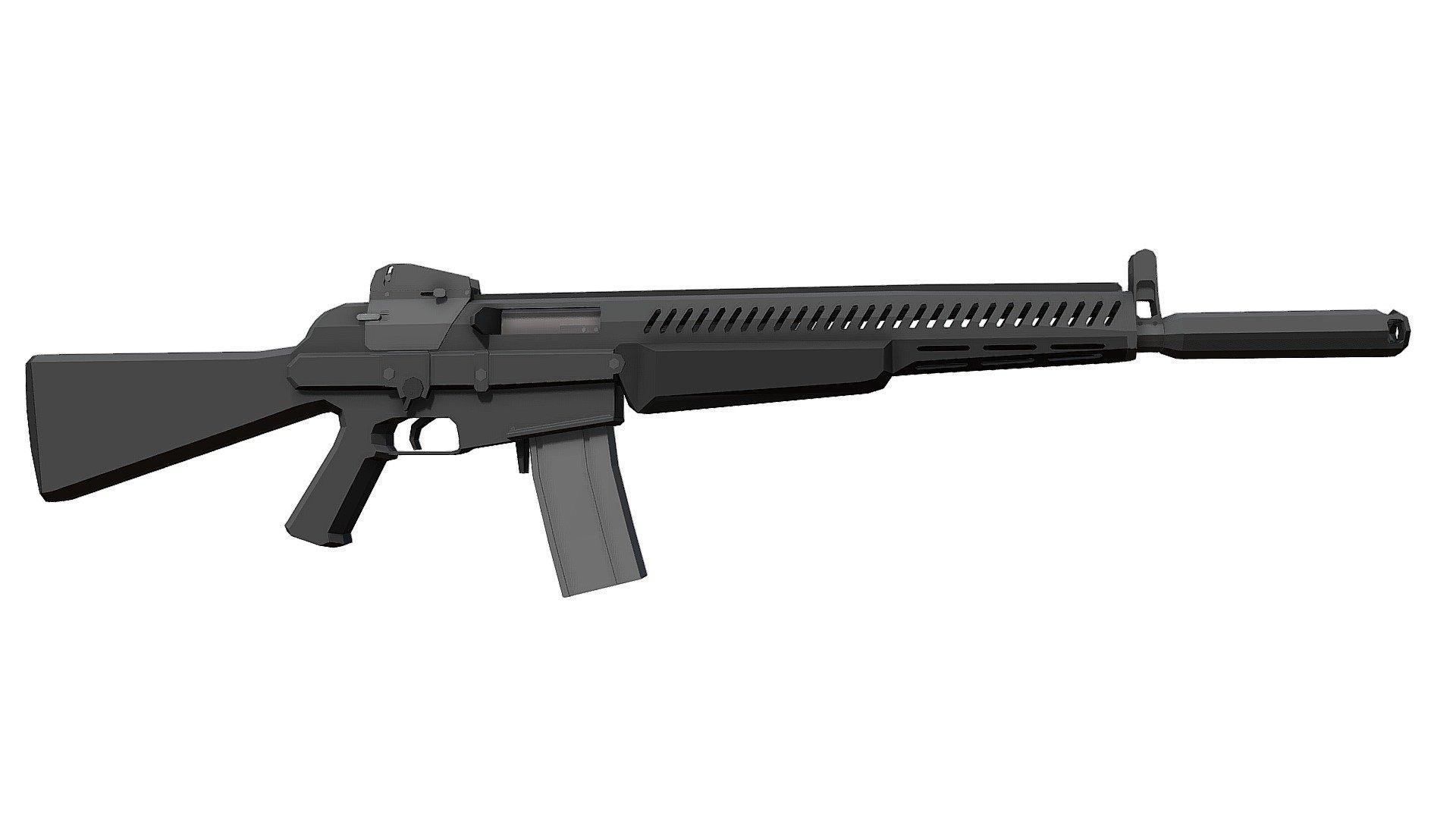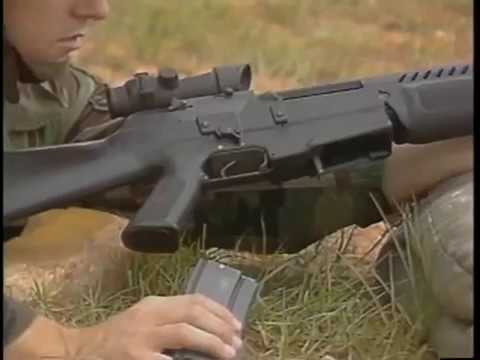The AAI ACR was part of the American search for a new assault rifle. The Advanced Combat Rifle (ACR) program began in the early 1980s to seek a new rifle design for adoption in about 1995.
Advanced Combat Rifle (ACR) Program
Several companies awarded multi-million-dollar contracts to develop caseless rifles and, later, further contracts to other companies to examine non-caseless solutions. The designers were given a free hand within broad weight and size limits. The primary stipulation was that the rifle had to provide 100 percent improvement in first-round hit probability over the current M16A1 rifle.
Under the stress of battle, the average soldier with an M16 may shoot a target at 45 meters, but the hit probability is reduced to one out of ten shots on target by 220 meters.
Eventually, in 1989, four candidate weapons were tested, from Heckler & Koch of Germany, Colt and the AAI Corporation of the United States, and Steyr-Mannlicher of Austria. Testing was prolonged and expensive, and at the end of it, the United States Army decided that while all the candidate rifles showed merit, none provided the desired quantum leap in performance.

The program was placed on hold in 1990, and that was that. The expenditure of the program was estimated at approximately US$300 million. However, despite the program’s end, the various designs are worth studying because they suggest how the next generation of rifles might go, as and when the armies of the world show sufficient interest.
Design
Compared to some of the others, the AAI ACR looks relatively conventional. Still, it fires fin-stabilized flechettes, dart-like projectiles, at the high velocity of 4600 feet per second (1400 m/s) and cannot fire conventional ammunition.

A gas piston drives the AAI ACR rifle. Although full details of the breech mechanism have not been revealed, it is said to be derived from an earlier AAI design which, in its most efficient form, used a three-chambered breech unit that moved very quickly in and out of engagement with the barrel to allow high-speed cycling of a three-round burst. There is no provision for full-automatic fire.
A four-power optical sight is fitted, with iron sights as a backup. The muzzle carries an unusual compensator/muzzle brake specially designed to work with flechettes.
The barrel is rifled with a prolonged twist – one turn in 85 inches – which gives the flechette a degree of roll stabilization and helps accuracy. The flechette idea is not new; several makers, including AAI Corporation, experimented with flechettes as rifle projectiles in the 1960s, but at that time, the materials and construction of the flechette cartridge were not particularly good.

While the standard 5.56×45mm case was used, the rifle was not safe to fire using standard ammunition due to the design of the gas system. A special magazine was used to prevent soldiers from loading standard 5.56×45mm NATO ammunition into the magazine, but rounds could still be chambered by hand. The AAI ACR was limited to three-round bursts even though its low recoil is one of the main reasons for using a fléchette.
Technology has made the flechette concept more acceptable; the AAI ACR rifle was considered a good design, although not sufficiently accurate for the intended purpose.
Technical specifications: AAI ACR
| Manufacturer: | AAI Corporation, Baltimore; MD., United States |
| Type: | gas-operated, semi-automatic, and three-round bursts assault rifle |
| Caliber: | 5.56 mm Special |
| Barrel: | 20.6 in (525 mm) |
| Weight (empty): | 7.78 lbs (3.53 kg) |
| Magazine capacity: | 30 rounds |










